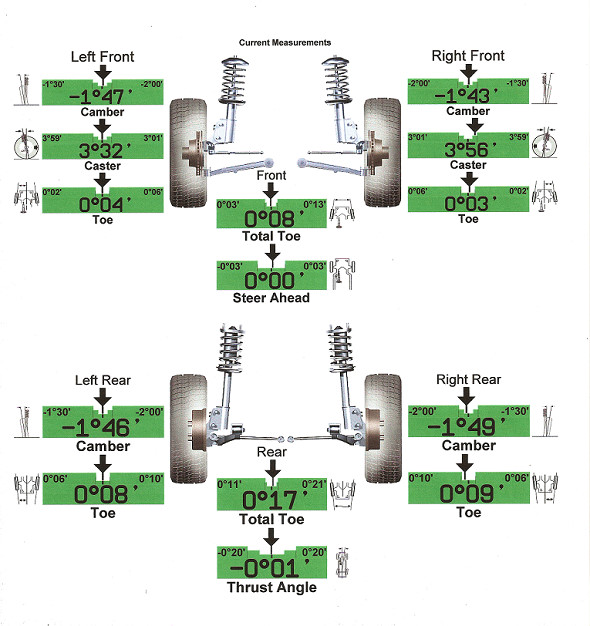Quote:
Originally Posted by Ginola

This is a classic fast road setup, ride heights don't want to be too low and the car will actually handle better with a reasonable amount of ride height as you dont put the roll centre through the ground., note there is very little toe, this will give you even tyre wear also. you might not get rid of the hard without going for a much better coilover or back to a spring/shock setup... talk to Scott.T about springs but cover your eyes when he shows you his "collection" :P
Ride height for a classic should be roughly this front 350 rear 345 (hub centre to arch lip) (you can play around a little with this to suit)
 |
The above re: ride height and camber are spot on.
For the front you can get slightly more camber to about -1.6/1.7 if you push the top of the disk/wheel inwards whilst nipping up the bolt. But I find this tramlines too much, so tend sit it around the -1.4 mark.
If you don't push on the disk/wheel it will naturally sit at around -1 with the camber bolt on it's minimum setting, due to bit of slack in the mounting holes. As mentioned above, if you take up this slack with a push you can get that all important extra bit of camber.
The rear have no adjustment, but even with no adjustment and a push on the top of the disk/wheel whilst tightening you can get it close to -1.4/1.5. It's a bit harder to do this on the rear as everything is a lot stiffer and less slack in the fittings.
All of this though is based on OE or Bilstein Macpherson dampers. The tolerance/quality of coilovers may effect this.
I have my own DIY camber tool, but cannot check toe with this. For that you need the proper tools but you can do a simple check with a tape measure if you know the toe was aligned before the change.
When you change the ride height it will impact the toe as the pivot point between the hub and the steering rack changes.
If you drop the car from OE ride height you actually bring the rack to hub ball-joint mounting closer to the rack. If you do not change the length of the rack this pushes the pivot point out so it ends up with toeing out, so you will quickly where your tyre inner edges.
As your going the other way you will get more toe-in, which could wear the outside edge of the tyre
If everything was aligned before the change just measure before and after by running a tape measure under the car.
Measure from a tread groove on the rear of the front tyre to the same tread groove on the opposite tyre. Then repeat the measurement on the front of the tyre. This will give you 'x' mm of toe.
Obviously if the front of the tyre measures less than the rear of the tyre it is toe-in 'x' mm and visa versa. If you really want' to know the 'degree's you would have to know the distance between your two measurement points (across the wheel) and use a bit of trigonometry and divide by 2 to get each side. But it's a little vague and obviously not as accurate as proper geo equipment.
If you don't know the toe alignment before then you can't guarantee that either wheel were originally toe-ing correctly. With this method you are only measuring side to side and not able to confirm perfect side to side straight ahead alignment.